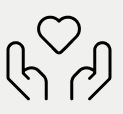Monster Truck |
On-Road / Drift |
Trail Truck / Crawler |
Full bodies |
1:10 |
Exterior accessories |
Find same →

90% goes to the Creator
(excluding payment processing fees)
$19.87
Technical
Printing Tips:
- All the parts can be printed in a 200x200x200 building volume 3D printer but for the two longer beds.
- The big parts has been tested in 0.2mm layer heights. I use smaller layer heights between 0.08 and 0.16mm for some of the smaller parts.
- Recommended little higher extruder temps than normally to improve / ensure a good inter-layer adhesion for stronger parts
- Recommended TPU material for parts like mirrors, protection bars, side stepper structures or front bumper bar parts for better durability
- Try to keep all loops/perimeters start/end points in the inshell of the big body parts. If you need it, indicate a start/end XY point in your slicer to achieve this. Will lead in some more travels but you won't have retractions in the outer-shell
- The big parts will be specially long prints. Ensure a good first layer, maybe over-squeezing a little the first layer, rising your bed temp and/or using special tapes or sprays
Supports:
I always try to reduce the supports needed in my designs, specially for the big parts, which depending of printing position would need a lot of supports, a little or none at all.
The bed parts can be printed without supports. Just put over the table the surface that will contact the cabin. It is plain and it has been designed to be printed like that.
For the cabin and the front I supply both the "pre-supported" versions with a solid where supports should be, and the un-supported version so you can add your own supports.
The supports I made are separated in Z from the part 0.2mm... If you can, ensure reviewing the preview that the support and the part are never "connected" and use a different printing process for that support part, maybe with 1 wall, 15% infill and 2 top layers. But if you trust your slicer supports, just try to add them in the same place than the ones I created
I always try to reduce the supports needed in my designs, specially for the big parts, which depending of printing position would need a lot of supports, a little or none at all.
The bed parts can be printed without supports. Just put over the table the surface that will contact the cabin. It is plain and it has been designed to be printed like that.
For the cabin and the front I supply both the "pre-supported" versions with a solid where supports should be, and the un-supported version so you can add your own supports.
The supports I made are separated in Z from the part 0.2mm... If you can, ensure reviewing the preview that the support and the part are never "connected" and use a different printing process for that support part, maybe with 1 wall, 15% infill and 2 top layers. But if you trust your slicer supports, just try to add them in the same place than the ones I created
26 objects
5 Followers
Joined 7 months ago
Hi there! I'm an individual who has been designing and playing with RC cars and Slot cars for some years. Take advantage downloading and playing with my designs :) Let your screen rest for a while building and playing physically!

 Free
Free